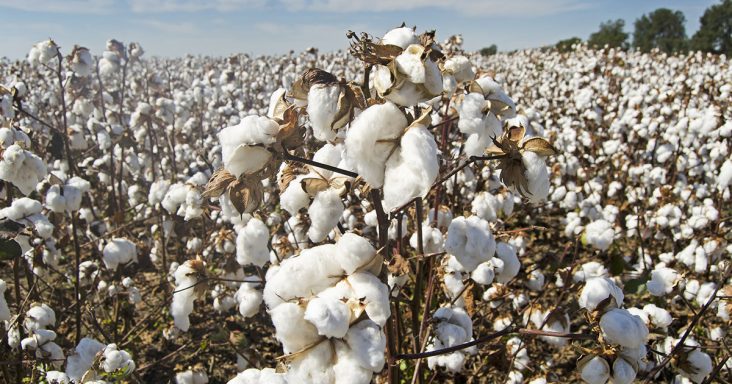Cotton prices surge as drought impacts other cotton growing states
by May 19, 2022 3:21 pm 1,284 views

Northeast Arkansas has gone more than a week with little to no rain and cotton farmers are taking advantage. For the week ending May 15, Arkansas cotton was 53% planted, up from 32% the previous week and besting the five-year average of 49%, according to the National Agricultural Statistics Service, part of the U.S. Department of Agriculture.
The torrid planting pace couldn’t have come at a better time for cotton producers. December cotton futures have been trading at an 11-year high.
“We basically doubled this for the last reporting period,” said Bill Robertson, extension cotton agronomist for the University of Arkansas System Division of Agriculture. “We were 60% planted on our county variety demos starting this week and were going to be 80% planted by mid-week. Planting progress of our county tests often runs very similar to the state’s planting progress.”
Scott Stiles, extension economist for the Division of Agriculture, said that cotton acres are expected to be up 40,000 this year to a total of 520,000 acres, about the same number of acres in 2020. The number of active Arkansas gins remained at 30 in 2021, the same as 2020. By comparison, there were 138 active gins in Arkansas in 1991.
Prices are higher, but input costs have been higher as well. Diesel fuel, natural gas and fertilizer price spikes are eating into those potential profit margins, but Stiles said the numbers still look positive for cotton farmers at this point.
“For 2022, cotton looks to have very favorable margins. This is despite input costs increasing close to 40% over the past year or about $210 per acre,” he said. “Assuming a 1,250-pound-per-acre yield, growers needed an additional 17 cents per pound to offset input cost increases. Fortunately, the trends in the cotton market have provided growers some cushion to offset the dramatic increases we’ve seen in fertilizers, chemicals and fuel.”
Stiles said that December 2022 cotton futures were trading at $1.32 per pound on Monday, the highest the December contract has traded since June 2011.
In USDA’s May 12 supply/demand report, U.S. cotton ending stocks for the 2022 marketing year are projected to decline 500,000 bales to 2.9 million. This would be the lowest U.S. ending stocks since 2016.
“This outlook may seem odd as U.S.-planted acres are expected to increase by 1 million this year,” Stiles said. “However, the severe drought conditions in Texas and Oklahoma are expected to increase the number of acres abandoned or unplanted.”
A cotton growing capitol in Texas, the city of Lubbock, has received about one half inch of rain year-to-date or 13% of normal. The May 10 U.S. Drought Monitor indicates all of the Southern High Plains area of Texas as being in “exceptional” drought — the most intense category.
“This creates a great deal of uncertainty about the size of the 2022 U.S. cotton crop,” Stiles said. “Texas, Oklahoma, and Kansas are projected to have 61% of the total U.S. cotton acres, about 7.5 million acres. All three states are dealing with very dry conditions at planting.”
